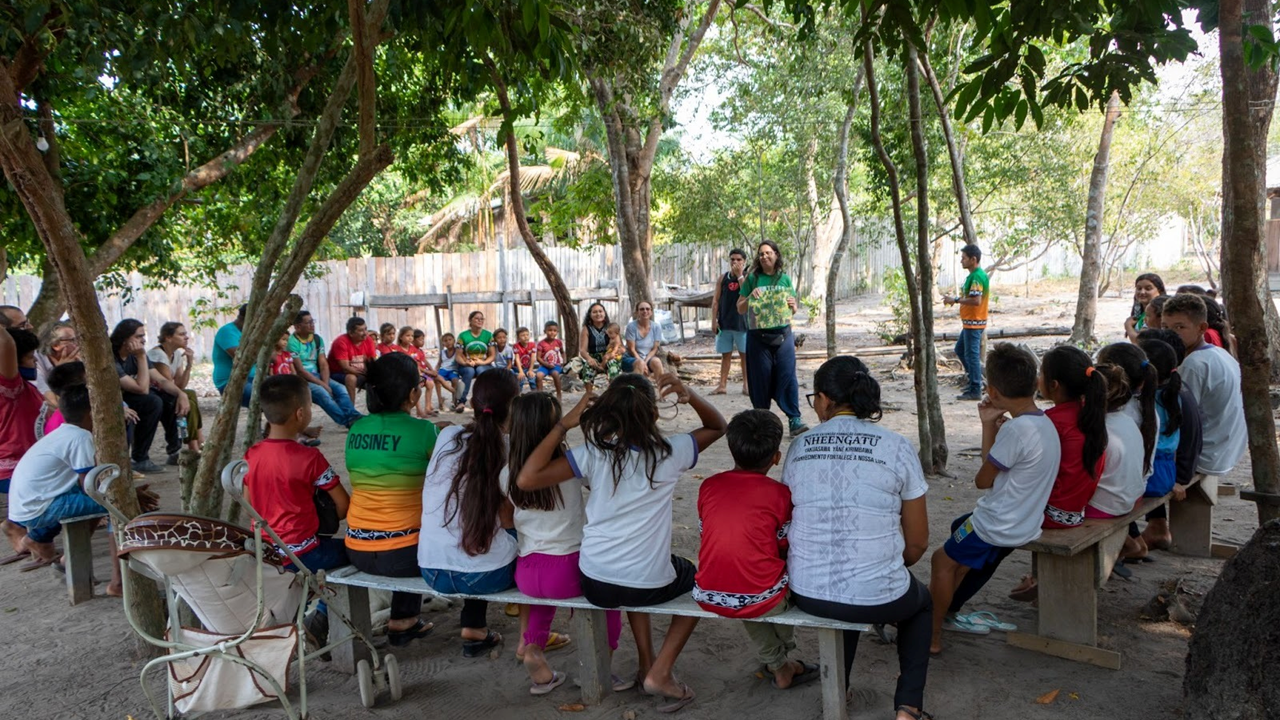
Challenges of the Communities
Communities in Brazil face numerous challenges, including forest loss and degradation, extreme droughts and intense rainfall and flooding events, forest fires, disputes over land use and ownership, and economic and political marginalization.
The loss and degradation of forests over the years have been significant, and with this loss come other problems, such as increased forest fragmentation, increased susceptibility to forest fires, changes in the local climate, and loss of biodiversity.
We identified an intensification of extreme droughts and heavy rainfall events in the three study sites of the project, which exacerbates the vulnerabilities of local communities, especially those that depend directly on natural resources for their livelihoods.
Extreme droughts and high temperatures have led to an increase in the occurrence of fires in the Tapajós region, with impacts ranging from agricultural losses to health problems related to exposure to smoke from forest fires.
Traditional communities and indigenous peoples suffer from historical marginalization, exploitation, territorial conflicts, economic hardship, and loss of cultural identity.
Challenges in accessing basic, quality services such as education and healthcare are factors that increase the sociocultural vulnerability of these populations.
Extreme drought
Flood season
Impacts of COVID-19 and its relationship with other challenges.
Disasters highlight existing vulnerabilities, like the pandemic, they not only negatively impacted the health of communities but also interacted with, and in some cases exacerbated, existing social, economic, and environmental risks and problems.
In the Quilombo Abacatal community, the main impacts faced during the COVID-19 period were: food and economic difficulties; misinformation and false information about the pandemic; and the exacerbation of pre-existing vulnerabilities (education, economy, and sociability).
In the communities where we worked, the school sought to be a safe haven in the community, even with the changes in school dynamics caused by the pandemic, which forced the shift from in-person to remote learning. It was necessary to adapt to the new reality, aggravated by a lack of equipment, training to use it, and limitations in access to technology and the internet. School staff felt insecure about remote learning, salaries, retirement, etc. Education professionals felt overwhelmed with so many responsibilities and numerous roles at school and at home, but they sought to reinvent themselves and have the courage to continue.
Children's and young people's perceptions of extreme weather events in the Amazon.
Through storytelling, drawing, guided walks on the beach, graphic representation, story creation, and comic strip production, we investigated the perceptions of children and young people about extreme weather events in the Amazon, especially the severe drought and high temperatures associated with El Niño 2023/24, which increased the flammability of the region, leading to forest fires. The children and young people recorded their understanding of the environmental problems and the local landscape: for example, the fire in the forest and the impossibility of fishing due to the severe drought.
Desired futures for communities related to fire.
We conducted a visualization exercise called Three Horizons and interviews with members of the RESEX Tapajós-Arapiuns community to identify desired futures related to forest fires, risks, and threats. The communities discussed their desired future well-being, their desired futures for agricultural production, pandemic preparedness, and drought resilience.
We found that uncontrolled fires represent a growing threat to physical well-being, respiratory health, sustainable food production, community cohesion, and territory.
The communities proposed solutions to the increased risk of destructive fires, including increased institutional presence and support for volunteer firefighters, the deployment of trained firefighters to assist and monitor field fires during the dry season and drought periods, and greater access to resources for communities wishing to reduce their risks through agricultural mechanization instead of controlled burning.


